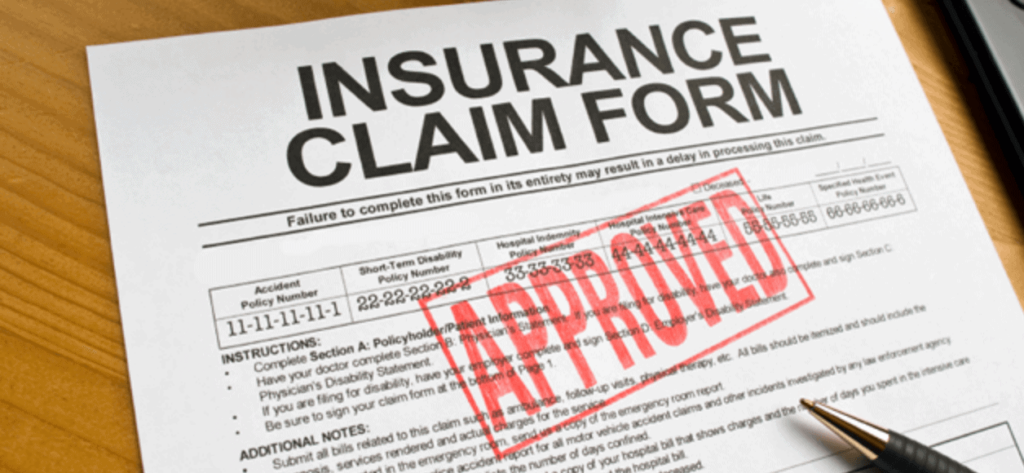Documenting Water Damage
Promptly documenting water damage is crucial for a successful insurance claim. By creating a comprehensive record, you provide evidence of the extent of the damage, facilitating a smooth claims process.
To thoroughly document water damage, follow these steps:
Taking Photos and Videos
- Capture clear and detailed photos of the affected areas, including close-ups of any visible damage.
- Take wide-angle shots to provide a comprehensive overview of the damage.
- Use a flashlight or additional lighting to illuminate any hidden areas.
- Record videos to document the extent of the water damage, showing the flow of water and any structural issues.
Creating a Written Record
- Describe the damage in detail, noting the location, type, and severity.
- Record the date and time of the water damage incident.
- List any potential causes of the damage, such as a burst pipe or leaking roof.
- Keep a record of any conversations with insurance adjusters or contractors.
By meticulously documenting water damage, you create a strong foundation for your insurance claim. This evidence will help you accurately assess the extent of the damage and receive fair compensation.
Filing an Insurance Claim
Experiencing water damage can be stressful, but filing an insurance claim doesn’t have to be. Follow these steps to ensure a smooth and successful claim process.
First, contact your insurance company as soon as possible to report the damage. Provide them with a detailed description of the incident, including the cause, extent, and location of the damage.
Contacting the Insurance Company
- Call the insurance company’s dedicated claims hotline or visit their website to file a claim online.
- Be prepared to provide your policy number, contact information, and a brief description of the damage.
- The insurance company will assign you a claims adjuster who will guide you through the process.
Information to Provide
- Policy Number: This identifies your insurance policy and coverage.
- Contact Information: Provide your name, address, phone number, and email address.
- Damage Description: Describe the cause, extent, and location of the water damage in detail.
- Supporting Documents: Gather any relevant documentation, such as photos, videos, or repair estimates.
Negotiating with Insurance Companies
When negotiating with insurance companies for a fair settlement, it’s crucial to present a strong case and effectively advocate for your claim. Gather evidence to support your claim, such as photographs, repair estimates, and receipts. Clearly articulate the extent of the damage and its impact on your property.
Understanding the Insurance Policy
Before negotiations, thoroughly review your insurance policy to understand the coverage limits, exclusions, and deductibles. This knowledge will help you set realistic expectations and determine the maximum amount you can claim.
Presenting Your Evidence
Organize your evidence in a logical manner and present it clearly to the insurance adjuster. Provide detailed explanations of the damage and how it occurred. Use photographs and videos to visually demonstrate the extent of the damage.
Negotiating the Settlement
Be prepared to negotiate the settlement amount. Start by presenting your initial claim, supported by evidence. Be willing to compromise within reason, but don’t undervalue your claim. Consider the actual cost of repairs and the impact of the damage on your property.
Seeking Professional Help
If negotiations reach an impasse, consider seeking professional help from an insurance attorney or public adjuster. They can provide expert guidance, represent your interests, and help you navigate the claims process effectively.
Hiring a Contractor

Once you have documented the water damage and filed an insurance claim, you may need to hire a contractor to repair the damage. Here are some tips for hiring a qualified contractor:
Getting Multiple Quotes
Get quotes from at least three different contractors. This will help you compare prices and services and find the best value for your money.
Checking References
Ask each contractor for references from previous clients. Contact these clients and ask about their experience with the contractor. This will help you gauge the contractor’s quality of work and customer service.
Choosing a Contractor
Once you have gathered quotes and checked references, choose a contractor who you feel comfortable with and who you believe will do a good job repairing your water damage.
Getting a Contract
Before any work begins, get a written contract from the contractor. The contract should include the scope of work, the price, and the payment schedule.
Preventing Future Water Damage
To prevent future water damage, proactive measures are essential. Implement the following tips to safeguard your property.
Regular Inspections and Maintenance
Regularly inspect your home for potential water damage risks, such as leaks, cracks, or loose fittings. Pay attention to areas like roofs, plumbing fixtures, and walls. Address any issues promptly to prevent minor problems from escalating.
Water Detectors and Alarms
Install water detectors and alarms in areas prone to water damage, such as bathrooms, kitchens, and basements. These devices can alert you to leaks or water accumulation, allowing for timely intervention.
Maintain Plumbing Systems
Ensure proper maintenance of your plumbing system. Regularly inspect pipes, faucets, and drains for leaks or blockages. Clean and maintain gutters and downspouts to prevent water buildup around your home’s foundation.
Exterior Maintenance
Check your roof for missing or damaged shingles, and seal any cracks or gaps to prevent water penetration. Clean gutters and downspouts to ensure proper drainage and prevent water from pooling around your home’s foundation.







